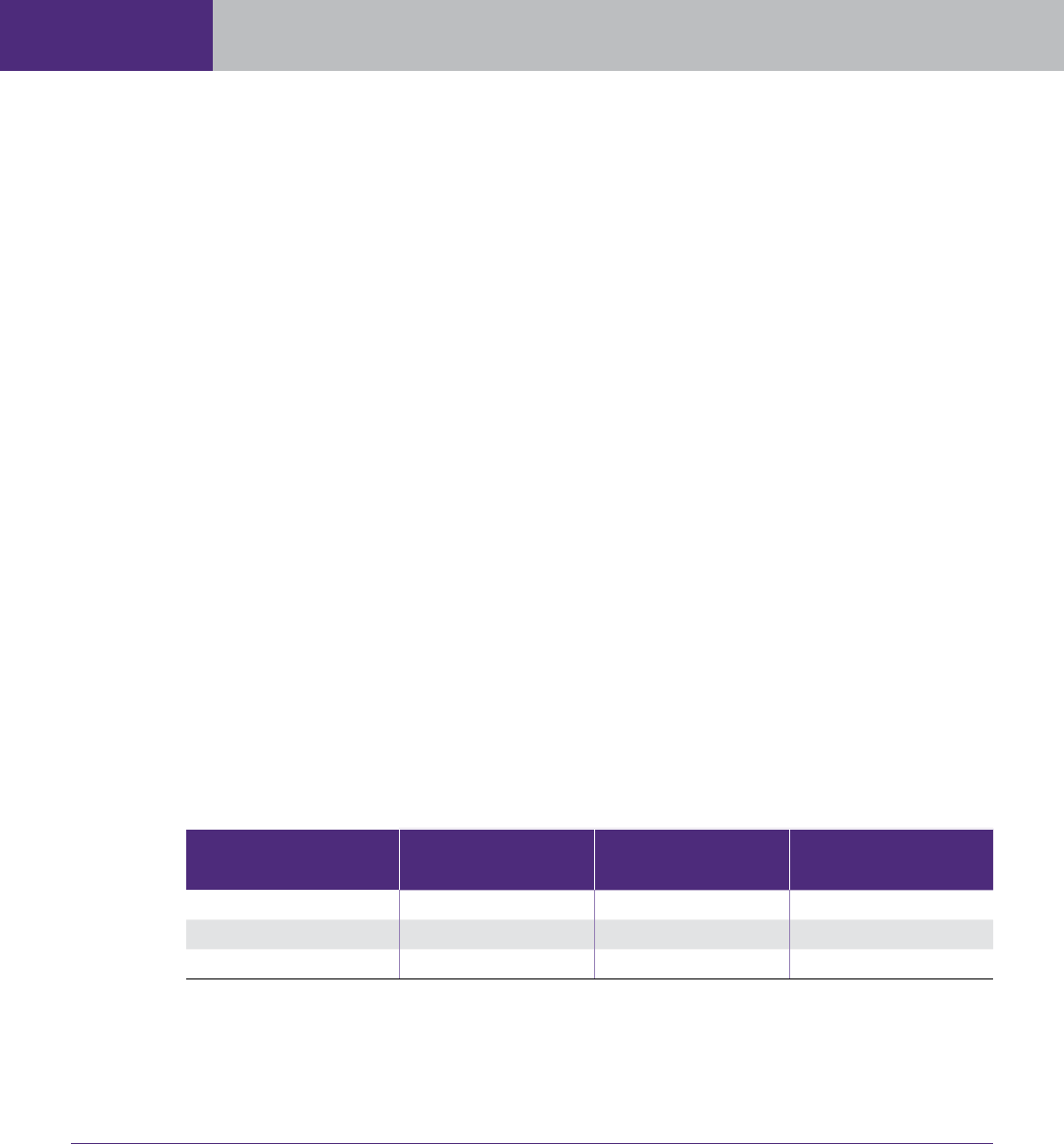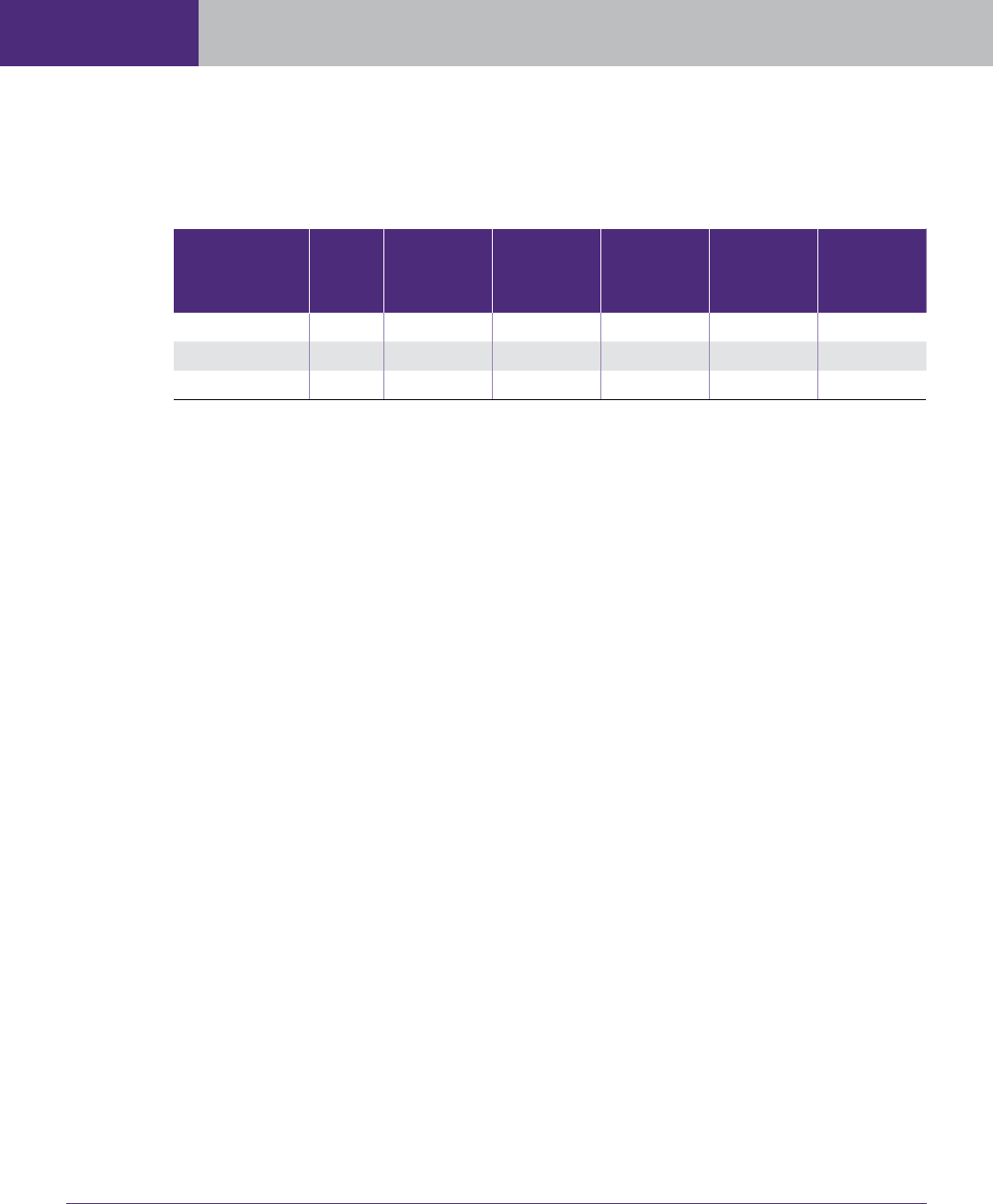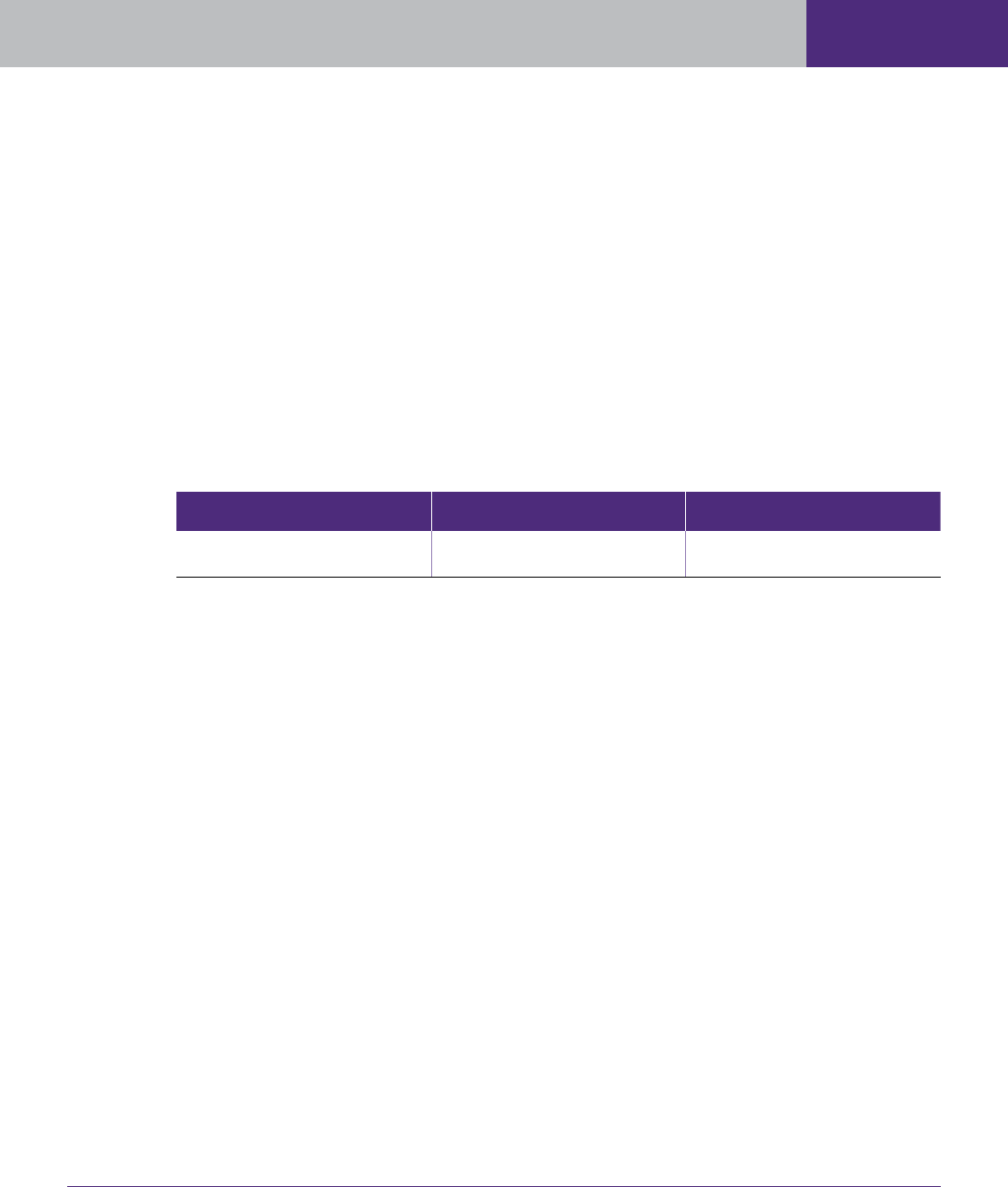
Most Serious Problems — Offer In Compromise266
Legislative
Recommendations
Most Serious
Problems
Most Litigated
Issues
Case Advocacy Appendices
MSP
#18
OFFER IN COMPROMISE: Policy Changes Made by the IRS to
the Offer in Compromise Program Make It More Difficult for
Taxpayers to Submit Acceptable Offers
RESPONSIBLE OFFICIALS
Mary Beth Murphy, Commissioner, Small Business/Self-Employed Division
Donna Hansberry, Chief, Office of Appeals
TAXPAYER RIGHTS IMPACTED
1
The Right to Quality Service
The Right to Finality
The Right to Privacy
The Right to a Fair and Just Tax System
DEFINITION OF PROBLEM
An offer in compromise (OIC) is an agreement between a taxpayer and the government that settles a
tax liability for payment of less than the full amount owed. Congress grants the IRS the authority to
accept offers pursuant to Internal Revenue Code (IRC) § 7122.
2
To its credit, the IRS has engaged in
an outreach campaign to make the OIC a more visible collection tool. For instance, it has worked to
develop electronic newsletters, IRS Tax Tips, and social media for both taxpayers and tax professionals
to use.
3
With a robust and flexible OIC program, the IRS receives money that it might not have collected
through other means and achieves voluntary tax compliance from the taxpayer (at least for the next five
years, which is long enough to create a long-term change in noncompliant behavior).
4
If the taxpayer
does not follow the terms of the agreement, the OIC defaults and the debt is reinstated.
5
The taxpayer
benefits by reaching finality with his or her tax debt sooner in the collection process and paying what
he or she can afford to pay, while the IRS benefits by creating a segment of noncompliant taxpayers who
become more compliant.
A 2017 study by TAS Research found that individual taxpayers (Individual Master File (IMF)) with
accepted OICs were significantly more likely (58 percent compared to 42 percent) to timely file their
subsequent income tax returns for the next five years when compared to taxpayers whose OICs the IRS
did not accept. For the first five years after the OIC, IMF taxpayers with accepted OICs were also much
1
See Taxpayer Bill of Rights (TBOR), www.TaxpayerAdvocate.irs.gov/taxpayer-rights. The rights contained in the TBOR are
also codified in the Internal Revenue Code (IRC). See IRC § 7803(a)(3).
2
Treas. Reg. § 301.7122-1(b).
3
IRS response to TAS information request (Aug. 20, 2018).
4
IRS, Form 656-B, Offer in Compromise 6 (Jun. 2018).
5
Internal Revenue Manual (IRM) 5.8.9.4, Potential Default Cases, (Jan. 12, 2017).

Taxpayer Advocate Service — 2018 Annual Report to Congress — Volume One 267
Legislative
Recommendations
Most Serious
Problems
Most Litigated
Issues
Case AdvocacyAppendices
more likely to pay their subsequent income taxes than taxpayers whose OICs the IRS did not accept (72
percent compared to 52 percent).
6
In 2018, TAS Research studied business taxpayers (Business Master File (BMF)) with OICs. It found
that BMF taxpayers with accepted OICs have a better filing rate than IMF taxpayers five years out.
Figure 1.18.1 shows that while 70 percent of IMF taxpayers with an accepted OIC file their returns
five years after an accepted OIC, 91 percent of BMF taxpayers with an accepted OIC do so five years
out.
7
BMF taxpayers also have better future payment compliance. Approximately 72 percent of IMF
taxpayers with accepted OICs had no balance due five years after an accepted OIC compared to 52
percent of IMF taxpayers without an accepted OIC.
8
Approximately 83 percent of BMF taxpayers had
no balance due five years after an accepted OIC compared to 75 percent of BMF taxpayers with no
accepted OIC.
9
FIGURE 1.18.1
IMF and BMF FIling and Payment Compliance for Five Years
After an Offer in Compromise Is Accepted
Filing Compliance
Payment Compliance
70%
IMF With Accepted OIC
BMF With Accepted OIC
72%
91%
83%
6
National Taxpayer Advocate 2017 Annual Report to Congress vol. 2, 43 (Research Study: A Study of the IRS Offer in
Compromise Program).
7
Id.; Research Study: A Study of the IRS Offer in Compromise Program for Business Taxpayers vol. 2, infra. For the purposes
of the Business Master File (BMF) study, TAS Research focused on partnerships, corporations, or sole proprietors.
8
National Taxpayer Advocate 2017 Annual Report to Congress vol. 2, 55; See Research Study: A Study of the IRS Offer in
Compromise Program for Business Taxpayers, infra.
9
Research Study: A Study of the IRS Offer in Compromise Program for Business Taxpayers vol 2, infra.

Most Serious Problems — Offer In Compromise268
Legislative
Recommendations
Most Serious
Problems
Most Litigated
Issues
Case Advocacy Appendices
The IRS is also losing revenue collection opportunities because it uses inflated projections of reasonable
collection potential (RCP). In about 40 percent of the BMF OICs that were not accepted, the OIC
amounts offered are much higher than the amounts ultimately collected through other means.
Notwithstanding the clear benefits of entering into OICs, the National Taxpayer Advocate is concerned
that the IRS is not doing enough to help BMF taxpayers file successful OICs. Additionally, the IRS has
made changes that create barriers to all taxpayers from submitting successful OICs:
The IRS moved away from having revenue officers (ROs) available to work OICs in each state;
OICs submitted by taxpayers who had not filed all necessary tax returns are returned to the
taxpayers as not processable, rather than holding them for a period to allow for return filing;
The IRS will keep the payments sent with OICs it returns for lack of filing compliance;
OICs returned to the taxpayer in error are not subject to the 24-month deemed acceptance period
in IRC § 7122(f); and
The time it takes to process OICs, including any appeals, may lead to multiple years of refund
offsets.
ANALYSIS OF PROBLEM
Background
Treasury Regulations provide three grounds for an OIC:
Doubt as to liability;
10
Doubt as to collectibility;
11
and
Effective tax administration.
12
The law requires two things before the IRS can deem an OIC processable. First, an OIC submission
must include a partial payment (referred to as a Tax Increase Prevention and Reconciliation Act or
“TIPRA” payment).
13
Second, the taxpayer must pay any applicable user fee.
14
Additionally, Treasury
Regulations require taxpayers to make the OIC in writing, sign the OIC under penalty of perjury,
and include all of the information “prescribed or requested by the Secretary.”
15
If an OIC meets the
10
Treas. Reg. 301.7122-1(b)(1). Doubt as to liability exists where there is a genuine dispute as to the existence or amount of
the correct tax liability under the law. Doubt as to liability does not exist where the liability has been established by a final
court decision or judgment concerning the existence or amount of the liability.
11
Treas. Reg. 301.7122-1(b)(2). Doubt as to collectibility exists in any case where the taxpayer’s assets and income are less
than the full amount of the liability.
12
Treas. Reg. 301.7122-1(b)(3). There are two grounds for effective tax administration offers: 1) If the Secretary determines
that, although collection in full could be achieved, collection of the full liability would cause the taxpayer economic hardship
within the meaning of Treas. Reg. § 301.6343-1 and; 2) If there are no grounds for an offer under the other offer in
compromise (OIC) criteria, the IRS may compromise to promote effective tax administration where compelling public policy
or equity considerations identified by the taxpayer provide a sufficient basis for compromising the liability. Compromise will
be justified only where, due to exceptional circumstances, collection of the full liability would undermine public confidence
that the tax laws are being administered in a fair and equitable manner.
13
IRC §§ 7122(c)(1), 7122(d)(3)(C). For lump sum offers, the partial payment must be 20 percent of the OIC amount. For a
periodic payment OIC, the partial payment must consist of the first installment payment. IRC § 7122(c)(1)(A)– (B).
14
IRC § 7122(c)(2)(B). The application fee is currently $186. If an individual taxpayer qualifies for the low income waiver, he
or she will not be required to send any payment with the OIC. IRS, Form 656-B, Offer in Compromise (Jun. 2018).
15
Treas. Reg. § 301.7122-1(d)(1).

Taxpayer Advocate Service — 2018 Annual Report to Congress — Volume One 269
Legislative
Recommendations
Most Serious
Problems
Most Litigated
Issues
Case AdvocacyAppendices
minimum criteria for consideration, the IRS deems it processable.
16
Prior to April 13, 2016, IRS
procedures dictated that if any of the following criteria were present, the IRS would determine an OIC
as not processable:
The taxpayer is in bankruptcy;
The taxpayer did not submit the application fee with the OIC;
17
The taxpayer failed to submit the initial payment with the OIC;
18
All liabilities have been referred to the Department of Justice;
19
The OIC is filed for an unassessed liability and internal information does not indicate that a
return has been filed;
The OIC is filed solely with respect to liabilities for which the statutory period for collection has
expired; and
The taxpayer marks the total amount of the payment as a deposit.
20
When the IRS determines that an OIC is not processable, it returns the OIC to the taxpayer with a letter
explaining the reason for the IRS’s determination.
21
With a not-processable returned OIC, the IRS may
return the application fee and initial payment to the taxpayer.
22
A rejected OIC differs from a returned
OIC in that the IRS has reviewed the facts of the case prior to rejection, and the taxpayer receives appeal
rights when the OIC is rejected.
23
The IRS will keep payments made on rejected OICs.
24
Every Revenue Officer Should Be Able to Process an OIC
Taxpayers submitting an OIC today can expect that the IRS will work their OIC at one of two
Centralized OIC sites or in one of two OIC field territories. The revenue officers (ROs) in the
field groups are spread across 22 states.
25
ROs who work OICs are referred to as OIC Specialists.
26
Previously, the Special Procedures Function investigated all OICs. As OIC receipts increased, Field ROs
worked OICs for a short period time prior to the establishment of specialized Field OIC groups in fiscal
year (FY) 1996.
27
OICs have gone from being something worked by all ROs to something worked in two territories. This
consolidation of work is not beneficial to the analysis of OICs, which often must take particular facts
and circumstances into account, much of which can be affected by the taxpayer’s geography. The IRS
16
IRM 5.8.2.4.1 (May 25, 2018). Centralized OIC employees make the initial determination of processability. Id.
17
In lieu of the application fee, a taxpayer may check the low income waiver box on Form 656, which would allow him or her to
submit the offer without payment.
18
If the OIC includes part of the initial payment, the OIC may be perfected during the case building process. IRM 5.8.2.4.1
(May 25, 2018).
19
The IRS does not have authority to accept an OIC that is controlled by the Department of Justice. IRM 5.8.1.6.1 (Nov. 8,
2018).
20
This does not include instances where the taxpayer checks the low income waiver box. IRM 5.8.2.3.1(1) (July 28, 2015).
21
IRM 5.8.2.5, Not Processable (May 25, 2018).
22
Id.; IRM 5.8.7.2, Returns (Oct. 07, 2016).
23
IRM 5.8.7.7, Rejection (Oct. 7, 2016).
24
IRS, Form 656, Offer in Compromise 5 (Mar. 2018).
25
Territory 1 has OC Specialists in 10 states and Territory 2 has OC Specialists in 12 states that are not covered in the ten by
Territory 1. IRS, Human Resources Reporting Center, https://persinfo.web.irs.gov/ (last visited Oct. 17, 2018).
26
IRS response to TAS information request (Apr. 26, 2018).
27
IRS response to TAS information request (Aug. 20, 2018). In 2005 the Field OIC groups were consolidated into three Areas.
Id.

Most Serious Problems — Offer In Compromise270
Legislative
Recommendations
Most Serious
Problems
Most Litigated
Issues
Case Advocacy Appendices
should revert back to having a greater geographic presence for OIC Specialists and have at least one
OIC Specialist (if not more) in each state. One benefit of having a Field RO work an OIC is that the
RO is knowledgeable and familiar with the particular community, its economy, and related issues in
which he or she works. However, between FYs 2013 and 2018 there was a ten percent decrease in OIC
Specialists (there were 145 OIC Specialists in FY 2013 and 131 as of FY 2018.)
28
The National Taxpayer
Advocate previously discussed the issue of decreasing numbers and lack of geographic dispersion of OIC
Specialists.
29
The IRS Is Not Doing Enough to Help Business Taxpayers File Successful OICs
The National Taxpayer Advocate is concerned that the IRS is not doing enough to accept OICs from
BMF taxpayers.
30
In 2018, TAS Research built on a previous study of IMF OICs by focusing on BMF
OICs. Overall, the acceptance rate for BMF OICs (24 percent) is lower than the rate for individual
OICs (44 percent).
31
While the IRS may be concerned that IMF and BMF taxpayers use the OIC process to delay collection
action, data from TAS research indicates that BMF taxpayers generally want to submit a successful OIC.
Of the BMF taxpayers who submitted an OIC, approximately 11 percent churned (churning occurs
when a taxpayer submits another OIC within 180 days after the IRS rejects the prior OIC or returns it
as not processable).
32
Of the BMF taxpayers that churned, approximately 33 percent ultimately had an
OIC accepted.
33
Figure 1.18.2 shows the churning rate based on business type.
FIGURE 1.18.2, Average Churning and Accepted OICS for BMF Taxpayers by Business
Type Between 2007 and 2017
34
BMF Type Total OICs Percent Churning
Percent Churning With
Accepted OIC
Corporation 20,963 11% 23%
Sole proprietor 12,009 12% 44%
Partnerships 4,283 11% 28%
28
IRS response to TAS information request (May 25, 2018).
29
See National Taxpayer Advocate 2014 Annual Report to Congress 211; National Taxpayer Advocate 2002 Annual Report to
Congress 15.
30
See, e.g., 2014 National Taxpayer Advocate Annual Report to Congress 206-217.
31
Research Study: A Study of the IRS Offer in Compromise Program for Business Taxpayers vol. 2, infra.
32
Id. Additionally, the National Taxpayer Advocate believes the word “churn” has negative connotations for taxpayers trying to
perfect their OICs. Instead, such taxpayers should be viewed as “curing” a defect in the OIC.
33
Id.
34
Id. The entity type of 7,965 businesses is unknown. Corporations filed 20,963 OICs between 2007 and 2017 with 2,386
churned OICs. Of those churned OICs, the IRS ultimately accepted 548 OICs. Sole proprietors filed 12,009 OICs between
2007 and 2017 with 1,482 OICs churning. Of those churned OICs, the IRS ultimately accepted 640 OICs. Partnerships
filed 4,283 OICs between 2007 and 2017 with 501 churned OICs. Of those churned OICs, the IRS ultimately accepted 138
OICs. Because sufficient time has not elapsed to determine if all 2017 OICs churned, churning percentages do not included
OICs submitted in 2017.

Taxpayer Advocate Service — 2018 Annual Report to Congress — Volume One 271
Legislative
Recommendations
Most Serious
Problems
Most Litigated
Issues
Case AdvocacyAppendices
In the 2017 OIC study, TAS Research looked at rejected OICs by individual taxpayers between 2009
and 2013 and determined that the IRS frequently overestimated RCP.
35
The RCP is calculated by the
IRS after reviewing the taxpayer’s financial information and in many instances will serve as the basis for
an acceptable OIC amount.
36
In 2018, TAS Research looked at BMF OICs and again determined that the IRS is losing some revenue
collection opportunities because of inflated RCPs connected to rejected OICs and OICs that were
returned due to an imperfection. Overall, the OIC amount offered for returned or rejected BMF OICs
was often less than what was ultimately collected. However, in about 40 percent of the BMF OICs that
were not accepted, the OIC amounts offered are much higher on average than the amounts ultimately
collected through other means. For instance as seen in Figure 1.18.3, for the 4,347 returned or rejected
corporation OICs, the average amount offered was $34,695, but the IRS ultimately collected an average
of $53,990.
37
However, 1,766 (over 40 percent) of those returned or rejected corporation OICs offered
more than what the IRS ultimately collected. In those 1,766 OICs, the average amount offered was
$49,920 and the average amount ultimately collected was just $16,189.
38
This trend is consistent across
all business types.
FIGURE 1.18.3, Amounts Offered and Collected for All Returned or Rejected Offers From
Corporations Compared to Returned or Rejected Offers From Corporations Where the Offer
Amount Was Greater Than Payment
39
All Returned/Rejected Corp. Offers
Count Mean Median Total
Offered 4,347 $34,695 $48,000 $150,818,185
Collected $53,990 $11,084 $206,024,907
Returned/Rejected Corp. Offers with Offer > Payment
Count Mean Median Total
Offered 1,766 $49,920 $12,000 $88,159,029
Collected $16,189 $1,766 $28,589,014
Furthermore, Figure 1.18.4 focuses on businesses that submitted OICs greater than the amount
collected. The table shows that the RCP for each of the entities is overestimated. In fact, depending on
business entity type, the RCP is overestimated about seven to ten times greater than the amount that is
offered and about 20 to 30 times what has been collected.
35
National Taxpayer Advocate 2017 Annual Report to Congress vol. 2, 59.
36
IRM 5.8.1.2.3, Policy (May 5, 2017).
37
Research Study: A Study of the IRS Offer in Compromise Program for Business Taxpayers vol. 2, infra.
38
Id.
39
Id. The value for amount collected is calculated through August 2018.

Most Serious Problems — Offer In Compromise272
Legislative
Recommendations
Most Serious
Problems
Most Litigated
Issues
Case Advocacy Appendices
FIGURE 1.18.4, Business Rejected OICs Which Exceeded Payments by Business Type
40
Business Type Count
Average
Amount
Offered
Average
Amount
Collected
Percentage
of Amount
Offered Average RCP
Percentage
of Amount
Collected
Partnership
107 $28,882 $7,787 27% $210,744 2,706%
Corporation
617 $53,911 $21,066 39% $414,590 1,968%
Sole Proprietor
178 $16,345 $5,794 35% $171,005 2,951%
The IRS should study what occurred in the financial analyses of these cases to determine how it can
improve the RCP calculation. Since the RCP plays such a large role in OIC analysis, having an accurate
RCP will improve the taxpayers’ ability to submit successful OICs.
The IRS Has Made Recent Policy Changes That Discourage All Taxpayers From
Submitting Successful Offers
OICs Submitted by a Taxpayer Who Has Not Filed All Necessary Tax Returns Are Returned to
the Taxpayer As Not Processable
In 2016, the IRS announced that it would return OICs submitted by a taxpayer who had not filed all
necessary tax returns (based on internal research) to the taxpayer as not processable.
41
Prior to this
change, if the IRS determined that a taxpayer was not in filing compliance, the IRS would process the
OIC and contact the taxpayer to discuss any late tax returns and allow the taxpayer time to file them
within a specified period of time.
42
The IRS decided to return OICs as not processable due to lack of filing compliance as part of an OIC
Future State Initiative, explaining “[the new policy] changes the current COIC practice to sign in offers
from non-compliant taxpayers and attempts to bring them current.”
43
With this initiative, the IRS will
return such OICs to the taxpayer with instructions to become compliant and then resubmit his or her
OIC. A TAS review of the data relied on by the IRS indicates that the IRS considered the time saved by
not working these OICs any further; however, it did not consider the time to work a resubmitted OIC or
conduct any analysis to compare the time saved by returning these OICs versus keeping them open and
achieving filing compliance in the future and resolving outstanding tax liabilities.
40
Research Study: A Study of the IRS Offer in Compromise Program for Business Taxpayers vol. 2, infra. The value for amount
collected is calculated through August 2018.
41
Memorandum from Director, Collection Policy to Director, Specialty Collection Offers, Liens & Advisory (Apr. 13, 2016) (on
file with the author).
42
IRM 5.8.3.6(1), Perfecting Field Cases (July 28, 2015); IRM 5.8.3.7(1), Perfecting COIC Cases (Dec. 7, 2015).
43
IRS response to TAS information request (Sept. 20, 2017). For an in-depth discussion of the IRS’s Future State, see
National Taxpayer Advocate 2015 Annual Report to Congress 3-13.

Taxpayer Advocate Service — 2018 Annual Report to Congress — Volume One 273
Legislative
Recommendations
Most Serious
Problems
Most Litigated
Issues
Case AdvocacyAppendices
During FY 2017 and the first three quarters of FY 2018, the IRS returned 2,767 IMF OICs because
of unfiled returns. Of those returned OICs, 947 taxpayers (approximately 34 percent) resubmitted an
OIC.
44
The IRS returned 561 OICs to BMF taxpayers because of unfiled returns in FY 2017. Of those
returned OICs, 266 taxpayers (approximately 47 percent) resubmitted OICs.
45
The IRS Will Keep the Payments Sent With OICs That Are Returned for Lack of Filing
Compliance
In February 2017, the IRS announced a change in practice in which the IRS will keep the payments sent
with OICs that are returned for lack of filing compliance.
46
The payments are applied to the liability;
however, the taxpayer cannot have these funds applied to subsequent OICs. In many instances, the OIC
funds may be borrowed or are from sources not generally available to the taxpayer. By not processing
these OICs (see above) and keeping the payments, the IRS creates a major obstacle to submitting a
successful OIC.
Prior to 2006, sums submitted with an OIC were considered deposits and were not applied to the
liability until the IRS accepted the OIC, unless the taxpayer provided written authorization for
application of the payments.
47
Subsequently, the Tax Increase Prevention and Reconciliation Act of
2005 (TIPRA) required taxpayers to submit a partial payment with the OIC package (hence, the
“TIPRA payment”).
48
In lieu of updated regulations, the IRS issued Notice 2006-68 in July 2006.
Under Notice 2006-68, the IRS treats the TIPRA payment as a payment of tax rather than a refundable
deposit, as the regulations do. Of all the IMF OICs that the IRS returned for lack of filing compliance
during FY 2018, 554 taxpayers made a TIPRA payment with their original OIC. Of those 554
taxpayers, IRS kept the TIPRA payment in approximately 18 percent of the cases and did not reopen the
original OIC, causing the taxpayer to come up with another TIPRA payment for any subsequent OIC.
49
Likewise, 190 BMF taxpayers made a TIPRA payment with their original OIC. Of those taxpayers, 64
percent had their TIPRA payment retained without the OIC being reopened by the IRS. Since the IRS
has taken the legal position in Notice 2006-68 that the IRS must keep TIPRA payments because they
are viewed as payments and not deposits, the IRS should provide taxpayers with an opportunity to cure
any defect prior to considering the OIC not processable. The IRS impedes compliance by keeping OIC
payments without first offering an opportunity to cure OICs it would otherwise deem not processable.
44
For the purposes of this analysis, TAS Research considered the OIC to be a resubmission if it was more than four weeks
after the date indicated by the Small Business/Self-Employed (SB/SE) division as the return date. IRS response to TAS
information request (Aug. 20, 2018); Individual Master File for the Taxpayer Identification Numbers (TINs) provided by SB/SE
where an OIC was returned in FY 2017 as unprocessable because of unfiled returns.
45
IRS response to TAS information request (Aug. 20, 2018); Individual Master File for the TINs provided by SB/SE where an
OIC was returned in FY 2017 as unprocessable because of unfiled returns.
46
Memorandum from Director, Collection Policy to Director, Specialty Collection, Liens & Advisory (Feb. 23, 2017) (on file with
the author).
47
Treas. Reg. § 301.7122-1(h).
48
Tax Increase Prevention and Reconciliation Act of 2005 (TIPRA), Pub. L. No. 109-22, §509, 120 Stat. 362 (2006).
49
IRS response to TAS information request (Aug. 31, 2018). The IRS may reconsider a returned OIC if doing so would be in
the best interest of the IRS and the taxpayer. Generally, in these instances the IRS will not require another application fee
or TIPRA payment. IRM 5.8.7.3, Return Reconsideration (Oct. 7, 2016).

Most Serious Problems — Offer In Compromise274
Legislative
Recommendations
Most Serious
Problems
Most Litigated
Issues
Case Advocacy Appendices
OICs Returned in Error Are Not Subject to the 24-Month Deemed Acceptance Period in
IRC § 7122(f)
Under IRC § 7122(f), which Congress added as part of TIPRA, if an OIC has not been rejected within
24 months of submission, the IRS must deem it accepted.
50
This legislation occurred as a result of
problems first identified with OIC processing during Congressional hearings for the IRS Restructuring
and Reform Act of 1998 (RRA 98).
51
The president of the National Society of Accountants (NSA)
reported NSA members experienced “inordinate delays” with the processing of OICs.
52
One woman
described her experience getting an OIC in connection with an innocent spouse claim. She reported in
part:
I have offered to pay the original assessed amount of $9,000, but that was flatly rejected.
This process of offer in compromise has taken nearly two years to negotiate. At almost every
turn, I have hit a wall in terms of requesting information or filing information. It appears
to me that the right hand doesn’t know what the left hand is doing. I have noticed that in
requesting certain information, letters are signed by one person, but questions should be
directed to another. This slows the process. An agent in Idaho returned my original offer
in compromise because it was submitted on a photocopied form rather than a carbon-copy
original. This slows the process.
53
In an email dated April 27, 2018, IRS Counsel stated that OICs returned in error are not subject to the
24-month deemed acceptance period in IRC § 7122(f).
54
Since an OIC will not be deemed acceptable
once it is rejected, the 24-month period under IRC § 7122(f) is extinguished once the OIC is rejected.
IRC § 7122(f) does not distinguish between a rejection with merit and a rejection made in error by the
IRS.
55
As a result, the IRS will no longer apply the protections of IRC § 7122(f) to OICs returned to
taxpayers after an erroneous rejection by the IRS.
Congress created the protections found in IRC § 7122(f) after listening to taxpayers and practitioners
describe the situations in which they found themselves. By exempting the time associated with an OIC
returned erroneously to the taxpayer, the IRS is going against the Congressional intent in IRC § 7122(f)
as well as violating the taxpayer’s right to a fair and just tax system. This change will also lead to
confusion for taxpayers, particularly for those who do not understand the difference between a returned
and a rejected OIC. And in totality, all of the changes described above will make it more difficult for
taxpayers to get the IRS to accept an OIC.
50
Pub. L. No. 109-222, §509(b)(2), 120 Stat. 363.
51
Taxpayer Rights Proposals And Recommendations of the National Commission on Restructuring the Internal Revenue Service
on Taxpayer Protections and Rights: Hearing Before the H. Subcomm. on Oversight, 105th Cong. 17 (1997) (statement of Rep.
William J. Coyne).
52
IRS Restructuring: Hearing Before the S. Comm. on Finance, 105th Cong. 240 (1997) (statement of Douglas C. Burnette,
president, National Society of Accountants).
53
Internal Revenue Service’s Methods: Hearing Before the S. Comm. on Appropriations, 105th Cong. 17 (1998) (statement of
Amy Powers).
54
In some instances this will harm taxpayers twice. The IRS believes the 24-month period under IRC § 7122(f) stops to run
when an OIC is closed, even if the IRS erroneously returns or withdraws an OIC to a taxpayer and later reopens it. However,
the IRS tolls the collection statute expiration date timeframe in such reopened offers, which allows the IRS a longer time to
collect the taxpayer’s debt if the OIC is not accepted. Treas. Reg. § 301.7122-1(i). So the taxpayer is inconvenienced with
an erroneously returned OIC that no longer is protected by a two-year timeframe for processing but is also subjected to a
longer collection period.
55
See also IRS, Notice 2006-68, Downpayments for Offers in Compromise (July 31, 2006).

Taxpayer Advocate Service — 2018 Annual Report to Congress — Volume One 275
Legislative
Recommendations
Most Serious
Problems
Most Litigated
Issues
Case AdvocacyAppendices
The Time It Takes for Appeals to Process OIC Appeals May Lead to Multiple Years of Refund
Offsets
As a term of acceptance for the OIC, the taxpayer agrees that the IRS will keep any refund, including
interest, that might be due for tax periods extending through the calendar year in which the IRS
accepts the offer.
56
This policy may make sense when the OIC can be processed (including any Appeals
action) within a year. However, practitioners report this practice harms their clients because processing
OICs takes so long that the IRS takes multiple refunds.
57
It can be especially difficult for low income
taxpayers who rely on their tax refunds to meet their basic living expenses. Figure 1.18.5 shows the cycle
time for OICs worked in Appeals from receipt of the case until closure.
FIGURE 1.18.5, Appeals Offer in Compromise Case Closed Cycle Time FY 2016-FY 2018
58
FY 2016 FY 2017 FY 2018
174.8 days
(5.8 months)
193.6 days
(6.5 months)
194.7 days
(6.5 months)
While Appeals is not the only cause of delayed processing, the average amount of time that Appeals
keeps a case has gone from 5.8 months in FY 2016 to 6.5 months in FY 2018. This means if a taxpayer
appeals a rejected OIC to Appeals after August of a given year, there is a likelihood that the OIC will be
worked into the next calendar year, and the taxpayer will lose an additional refund. The IRS accepted
24,958 IMF OICs in FY 2017 and in 1.5 percent (378 OICs) of those, the taxpayer lost two refunds.
59
The lost refunds total $ 945,953.
60
For BMF OICs, the IRS accepted 1,599 OICs in FY 2017. Of that
amount, less than one percent (seven OICs) lost two refunds. The lost refunds total $20,383.54.
61
This
impacts the taxpayer’s right to a fair and just tax system.
The role of Appeals is not to develop the case. Appeals employees are instructed to “ask the taxpayer
for clarifying information if the taxpayer (particularly a pro se taxpayer) is unsure of what to provide to
clarify a position that is being advanced by the taxpayer. You will primarily rely on the case development
that is in the case file at the time of appeal.”
62
Additionally, Appeals employees are instructed to
consider only the items in dispute at the time of the OIC rejection or issues raised by the taxpayer.
63
Since OIC analysis is now centralized, Appeals should review its employees’ training and technical
experience to ensure it has a sufficient number of employees to work these OIC cases timely.
56
IRS, Form 656, Offer in Compromise 5 (Mar. 2018).
57
Tax analysTs, Offer in Compromise Participation Can Mean Lost Refunds for Some (June 12, 2018).
58
IRS response to TAS information request (Aug. 6, 2018).
59
Analysis of OIC submission dates and offset refunds from IMF.
60
Id.
61
Analysis of OIC submission dates and offset refunds from BMF.
62
IRM 8.23.1.3(2), Conference and Settlement Practices (Apr. 18, 2016).
63
IRM 8.23.1.3(3), Conference and Settlement Practices (Apr. 18, 2016).

Most Serious Problems — Offer In Compromise276
Legislative
Recommendations
Most Serious
Problems
Most Litigated
Issues
Case Advocacy Appendices
CONCLUSION
As demonstrated by TAS Research, the OIC is a valuable collection tool for both the IRS and taxpayers.
It is a cost-effective way to encourage long-term tax compliance. It provides finality to taxpayers who
are struggling with a tax liability. It saves money for the IRS by collecting as much as possible early in
the process, without expensive enforcement action.
However, the IRS has made several changes to the OIC program which threaten to leave the OIC out
of reach for some taxpayers. Instead of returning OICs for lack of filing compliance, the IRS should
retain the OIC for a period of time during which the taxpayer can “cure” the defect of missing tax
returns. By adopting this approach, the IRS would only retain a TIPRA payment in situations where
an OIC defect cannot be cured. The IRS should rethink its analysis of when the 24-month processing
limitation applies in cases where it rejects an OIC, especially in cases where the rejection was an IRS
error. Refusing to apply this protection to taxpayers compounds the IRS errors to the detriment of
taxpayers. Last, the IRS should review its policy of offsetting multiple years of refunds where there
are long processing times for OIC appeals. The recent IRS changes to the OIC program could harm
taxpayers and may impact the OIC’s viability as a collection tool in the future.
RECOMMENDATIONS
The National Taxpayer Advocate recommends that the IRS:
1. Have at least one OIC Specialist in each state to ensure a more even geographic presence for OIC
analysis.
2. Change its policy for deeming OICs not processable if the taxpayer is not current with his or
her filing requirement and reinstate the requirement to retain the OIC and contact taxpayers to
obtain missing returns within a specified period of time.
3. Reconsider its determination that OICs returned or withdrawn in error are not subject to the
24-month deemed acceptance period in IRC § 7122(f).
4. Limit the number of refunds that can be offset while an OIC is pending to one refund only.
5. Conduct a study to analyze the OIC amount offered and collected amounts to understand why
the IRS is rejecting OICs that have an offered amount greater than the dollars collected. For
instance, the IRS should look at how it is applying the Allowable Living Expense standards and
where the taxpayer is obtaining the payment for the OIC.
